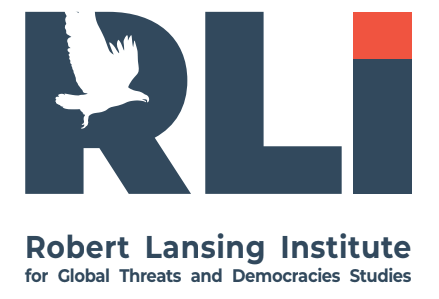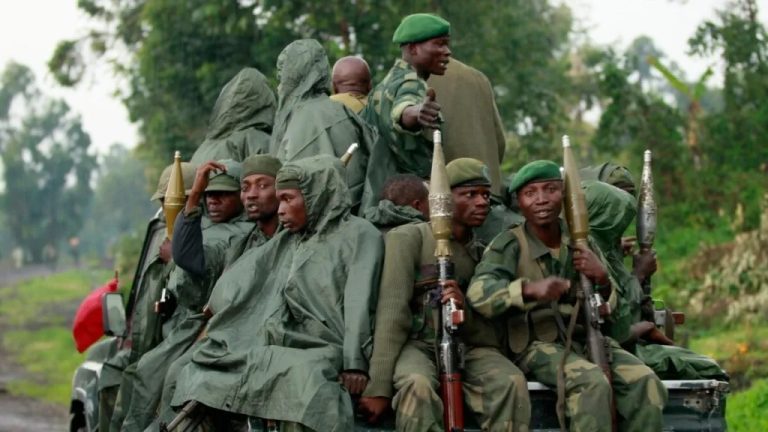The conflict in North Kivu and Ituri seems to be not over amid M23 rebels decision to withdraw from Nyiragongo and Rutshuru territories.
There are also other groups who have been killing people and are continuing to kill civilians with impunity. They have competed for years for control of the area’s rich mines. Some of the groups have ties to Rwanda, Uganda or Burundi.
After the first clashes in March and April this year, the M23 declared multiple unilateral ceasefires. It also announced it was willing to lay down its arms for good. Then in April it promised to withdraw from the areas it had occupied after the fighting in late March and asked for a dialogue with the Congolese government.
These declarations happened at the onset of yet another round of talks between armed groups and the Congolese government in Nairobi under the aegis of Kenyan President Uhuru Kenyatta. The Congolese government framed these talks as the last chance for armed groups to surrender. Accompanied by this threat was an announcement of yet another regional force to be set up to fight armed groups.
The key reason of M23 withdraw is probably decreasing the level of Rwandan support. Generated strong messaging from international actors, along with cuts in development aid resulted in a change in Rwandan policy and the effective abandonment of the M23.
M23 rebels have withdrawn from Nyiragongo and Rutshuru territories controlled in North Kivu. Local sources say they are currently in a border village with Rwanda. According to civil society organizations in Nyiragongo, some villagers have returned to their homes. Residents who fled the latest M23 attacks in Rugari and Kisigari in Rutshuru are also returning to their villages.
On the ground in North Kivu, other Congolese armed groups have recently declared a new ad-hoc coalition, allegedly brokered by Congolese army officials. This is aimed at fighting the M23. Thus, the M23 rebellion finds itself in the tiny but highly strategic border triangle between eastern DRC, Rwanda and Uganda, and at the centre of fast-paced and interlaced local and regional security and diplomatic developments.
While the rebels withdrew after strong international pressure, they continued to control key strategic sites, such as the Bunagana border post to Uganda. These provided them with significant income from taxation. So, the tension between the countries and the unrest in the DRC are likely to continue.
M23 background
The M23 and its predecessor groups have claimed to defend Tutsi interests, particularly against ethnic Hutu militias like the Democratic Forces for the Liberation of Rwanda (FDLR). The FDLR was founded by Hutus who fled Rwanda after participating in the 1994 genocide of more than 800,000 Tutsis and moderate Hutus.
By 1996, the First Congolese War broke out as Rwanda and Uganda invaded the area where alleged Hutu killers were living to root them out.

M23 also known as the Congolese Revolutionary Army (Armée révolutionnaire du Congo) was composed of former members of the rebel CNDP, and allegedly sponsored by the government of the neighbouring states of Rwanda and Uganda.
Rwandan political support for the M23 also began with its foundation, and grew in intensity as the M23 made territorial gains. What is less clear is the extent to which Rwanda was directly responsible for the M23’s creation, or conversely whether it was reacting opportunistically to events triggered by Congolese actors.
Uganda’s primary role was to act as facilitator and host for peace-talks between the Congolese government and M23. While the UN Panel of Experts alleged some Ugandan support to the M23, this is disputed by many observers, and – if it took place – was small scale and relatively unimportant. The reasons for Uganda’s involvement are again complicated.
The M23 rebellion can be viewed as a corollary of the Second Congo War, also known as Africa’s first world war, that started in 1998.
With the Sun City peace agreement the war officially came to an end. Among other things, this stipulated the inclusion and integration of combatants from rebel groups in the Military of the Democratic Republic of the Congo (FARDC).
M23 says the DRC government has failed to honor a 2009 agreement under which its fighters were to be incorporated into the army. However, in 2012, they mutinied, saying the deal had not been upheld and naming their group the March 23 (M23) Movement.
A former rebel and Tutsi Laurent Nkunda refused to integrate into the FARDC because he believed the army was threatening the ethnic Tutsi populations living in the Eastern DRC’s Kivu regions. In addition, the Rwandan Hutu refugees living in the area had now organized themselves as the Democratic Liberation Forces of Rwanda (FDLR) and Nkunda perceived them as a threat to the Tutsi populations as well. He set up the National Congress for the Defence of the People (CNDP) and started attacking the FLDR and the FARDC forces in the Kivu regions.
Regarding the geography of the rebellion, by the end of 2012 the M23 had taken control over large parts of the Rutshuru area in North Kivu, close to the Rwandan border (UCDP). This area is one of the major mining sites for coltan in the ‘Little North’ in North Kivu. This indicates that M23 rebels, former CNDP-rebels, were aware of the resource-richness of the area.
By the end of 2012 the M23 rebels started to move closer to Goma, the capital of North Kivu and they managed to seize the city on 18 November for a period of 14 days (UCDP). Goma is the city where Kivu’s mining products from the resource-rich peripheries Rutshuru, Masisi and Walikale are gathered and traded onto the international market.
Ever since conflict started in North Kivu rebel groups have occupied territories through which they also gain the control over the access to mines, and this also applies to the M23. This generates income in several ways.
The rebels gain revenues by selling mining licenses to anyone that wants to operate in the area under their control. By establishing control over access to the mines, the rebels can continue to engage in this lucrative business. There is evidence that the M23 installs roadblocks in their occupied territory to tax coltan as it is traded to other areas. There are signs that rebel groups in the area engage in partnerships with international companies that secure extraction and trading ties in exchange for financial support.
The group insists it is fighting ethnic Hutu groups to protect the minority Tutsi living along the border between Congo and Rwanda.
A United Nations report found that Rwanda created and commanded the M23 rebel group. Rwanda ceased its support following international pressure as well as the military defeat by the DRC and the UN in 2013. After the M23 attacks of 2022, the Congolese government blamed Rwanda, and accused President Paul Kagame’s government of supporting the rebels. But Kigali insists that M23 is Congo’s internal problem and should be resolved among Congolese themselves.
Rwanda, and, to a lesser extent, Uganda, are seeking to maintain covert external influence and control over areas of Eastern DRC. Both as a buffer against threats emerging from Congolese territory (FDLR), and the growing risk of a new generation of internal Rwandan dissidents finding safe haven in the DRC – and a mechanism to defend the entrenched economic and security advantages felt largely by a Rwandan-linked, and often Tutsi, local elite. This elite had taken root during the domination of Eastern DRC by the RCD-G, and included control of trade routes, mining sites and large areas of grazing land. Though impossible to prove, these resources are likely to have channelled significant profits back to Rwanda. The CNDP was launched by former RCD-G combatants, which in turn gave birth to the M23. Therefore, for many Congolese, the M23 represented the continuation of the long-running conflict with its war-time Rwandan opponent.
The problem is some M23’s leaders and combatants are likely to have been more self-interested, seeking to exploit the weakness of the Congolese government to defend or expand their control – over land, mining sites, parallel chains of command within the Congolese military, and trade routes – either for their own profit and power, or on behalf of local and regional backers, most notoriously Rwanda. Still others were seeking to avoid arrest and, in the case of Bosco Ntaganda, prosecution by the ICC. Loyalty to former commanders, both Congolese and external, are likely to also have played an important part.

Read also: DRC on the verge of a crisis




